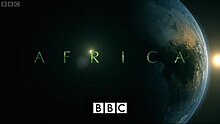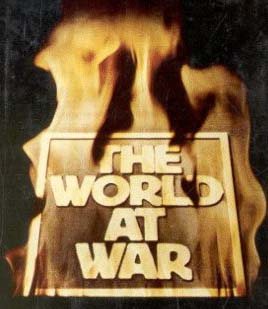
The World at War is a 26-episode British documentary television series that chronicles the events of the Second World War. It was produced in 1973, at a cost of £900,000, the most expensive factual series ever produced. It was produced by Jeremy Isaacs, narrated by Laurence Olivier and included music composed by Carl Davis. The book, The World at War, published the same year, was written by Mark Arnold-Forster to accompany the TV series.

The Blue Planet is a British nature documentary series created and produced by the BBC. It premiered on 12 September 2001 in the United Kingdom. It is narrated by David Attenborough.

The Life of Mammals is a nature documentary series written and presented by David Attenborough, first transmitted in the United Kingdom from 20 November 2002.

Doctor Who Confidential is a documentary series created by the British Broadcasting Corporation (BBC) to complement the revival of the long-running British science fiction television series Doctor Who. Each episode was broadcast on BBC Three on Saturdays, immediately after the broadcast of the weekly television episode on BBC One. The first and second series episodes ran 30 minutes each; third series instalments ran 45 minutes. BBC Three also broadcast a cut-down edition of the programme, lasting 15 minutes, shown after the repeats on Sundays and Fridays and after the weekday evening repeats of earlier seasons. Confidential received its own version of the Doctor Who theme tune, at least three different versions of the theme appeared in the series.

A nature documentary or wildlife documentary is a genre of documentary film or series about animals, plants, or other non-human living creatures, usually concentrating on video taken in their natural habitat but also often including footage of trained and captive animals. Sometimes they are about wildlife or ecosystems in relationship to human beings. Such programmes are most frequently made for television, particularly for public broadcasting channels, but some are also made for the cinema medium. The proliferation of this genre occurred almost simultaneously alongside the production of similar television series which is distributed across the world.

Planet Earth is a 2006 British television series produced by the BBC Natural History Unit. Five years in the making, it was the most expensive nature documentary series ever commissioned by the BBC and also the first to be filmed in high definition. The series received multiple awards, including four Emmy Awards, a Peabody Award, and an award from the Royal Television Society.
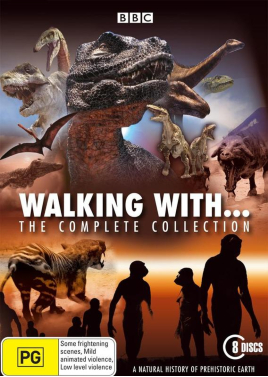
Walking with... is a palaeontology media franchise produced and broadcast by the BBC Natural History Unit. The franchise began with the critically acclaimed series Walking with Dinosaurs (1999), created by Tim Haines. By far the most watched science programme in British television history, Walking with Dinosaurs spawned numerous companion material and four sequel series: Walking with Beasts (2001), Walking with Cavemen (2003), Sea Monsters (2003) and Walking with Monsters (2005). Each series uses a combination of computer-generated imagery and animatronics, incorporated with live action footage shot at various locations, to portray prehistoric animals in the style of a traditional nature documentary.

Frozen Planet is a 2011 British nature documentary series, co-produced by the BBC and The Open University. It was filmed by the BBC Natural History Unit. The production team, which includes executive producer Alastair Fothergill and series producer Vanessa Berlowitz, were previously responsible for the award-winning series The Blue Planet (2001) and Planet Earth (2006), and Frozen Planet is billed as a sequel of sorts. David Attenborough returns as narrator. It is distributed under licence by the BBC in other countries, Discovery Channel for North America, ZDF for Germany, Antena 3 for Spain and Skai TV for Greece.

Life is a British nature documentary series created and produced by the BBC in association with The Open University. It was first broadcast as part of the BBC's Darwin Season on BBC One and BBC HD from October to December 2009. The series takes a global view of the specialised strategies and extreme behaviour that living things have developed in order to survive; what Charles Darwin termed "the struggle for existence". Four years in the making, the series was shot entirely in high definition.

Nature's Great Events is a wildlife documentary series made for BBC television, first shown in the UK on BBC One and BBC HD in February 2009. The series looks at how seasonal changes powered by the sun cause shifting weather patterns and ocean currents, which in turn create the conditions for some of the planet's most spectacular wildlife events. Each episode focuses on the challenges and opportunities these changes present to a few key species.
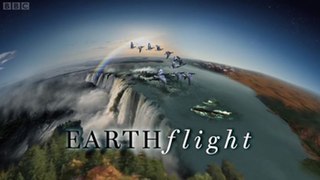
Earthflight is a British nature documentary that shows a flight from the view of the wings of birds across six continents, showing some of the world's greatest natural spectacles from a bird's-eye view. The BBC series was created by John Downer and narrated by David Tennant and consisted of six 60-minute episodes. The first episode aired on BBC One on 29 December 2011.

The 2013 specials of the British science fiction television programme Doctor Who are two additional episodes following the programme's seventh series. In addition to the traditional Christmas episode broadcast on 25 December 2013, a feature of the revived series since 2005, there was also a special celebrating the 50th anniversary of the programme broadcast on 23 November 2013, both airing on BBC One.
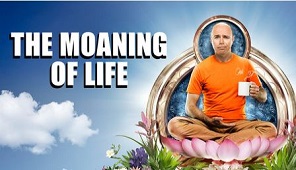
The Moaning of Life is a British travel documentary comedy television series broadcast on Sky 1. It follows Karl Pilkington around the world as he visits other cultures. Unlike An Idiot Abroad, which had a similar premise, The Moaning of Life sees Pilkington actually choosing to visit other countries in order to see how they face up to some of life's biggest issues with their cultures and customs. He also reassesses his life now that he has reached the age of 40, which he considers to be "middle age". The series has eleven one-hour episodes, and sees Pilkington visiting Ghana, India, Indonesia, Japan, Mexico, the Philippines, South Africa, Taiwan, and the United States. Its original broadcast run in the United Kingdom began on 20 October 2013.

Hidden Kingdoms is a British documentary television series that was first broadcast on BBC One on 16 January 2014. The three-part series is narrated by Stephen Fry and shows how animals experience the world from their perspective. Animals shown include a chipmunk, dung beetle, Rufous elephant shrew and treeshrew, and Japanese rhinoceros beetle.

Life Story is a British natural-history television series with Mike Gunton, Rupert Barrington and Tom Hugh-Jones from the BBC Natural History Unit on the production team. The six-part series reveals the challenges faced by individual animals at different stages of their lives and was first broadcast on BBC One in 2014. The series is introduced and narrated by David Attenborough.

The Hunt is a 2015 British nature documentary series made for BBC Television, first shown in the UK on BBC One and BBC One HD on 1 November 2015. The series is narrated by David Attenborough.

Planet Earth II is a 2016 British nature documentary series produced by the BBC as a sequel to Planet Earth, which was broadcast in 2006. The series is presented and narrated by Sir David Attenborough with the main theme music composed by Hans Zimmer.
Planet Earth is a television and film documentary franchise produced and broadcast by the BBC. The franchise began in 2001 with the success of The Blue Planet. As of 2017, The Blue Planet has spawned 5 series and one feature film.
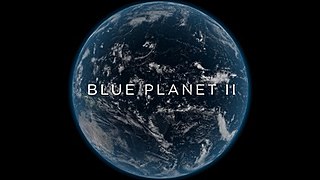
Blue Planet II is a 2017 British nature documentary series on marine life produced by the BBC Natural History Unit. Like its predecessor, The Blue Planet (2001), it is narrated and presented by naturalist Sir David Attenborough.
Dynasties is a 2018 British nature documentary series on five vulnerable or endangered species known to form enduring populations: chimpanzee, emperor penguin, lion, tiger and African wild dog. The series is produced by the BBC Natural History Unit and narrated by David Attenborough. The music score was composed by Benji Merrison. Each episode ends with Dynasties On Location, a behind the scenes look at the planning of each episode, which could be years in advance before production crew even started filming.
